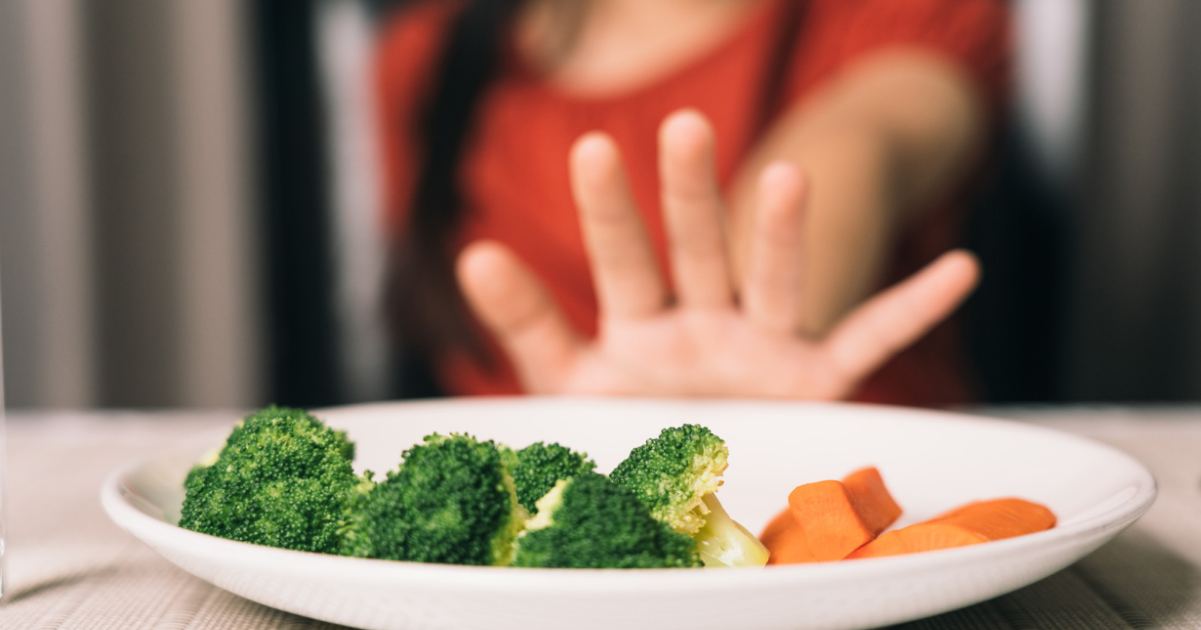
Top 18 Gifts for Picky Eaters to Encourage Positive Mealtime
Finding gifts for picky eaters can be a thoughtful way to support positive eating habits while fostering a more relaxed, enjoyable mealtime environment. With kids who may feel anxious or resistant to food, gifts that create low-pressure opportunities for food exploration can be game-changers. Whether designed to inspire curiosity or encourage hands-on involvement, these carefully selected gift ideas provide creative and gentle ways to help children build a more positive relationship with food. From charming books to interactive kitchen tools, each item is a step toward assisting picky eaters to feel more comfortable and confident at mealtime.
Books to Inspire Picky Eaters
Books are powerful tools in introducing picky eaters to the concept of food without any pressure to taste or try. Engaging stories and colorful illustrations provide a safe space for children to explore food concepts, often with humor or whimsical elements that encourage curiosity. Here are a few books that can inspire young readers and gently open the door to food exploration.
1. The Silly Food Book
The Silly Food Book brings a playful twist to food exploration with its vibrant, silly illustrations and kid-friendly poetry. This book combines humor with education, presenting fruits and vegetables in a way that captures kids’ attention while making food feel approachable and fun. Silly scenarios and illustrations encourage children to see food as something positive and engaging, helping to plant the seed for food acceptance. With some recipes included, kids can even help make simple dishes with a parent, allowing them to participate in food preparation at their comfort level.
2. Listening To My Body
For children who struggle to recognize their hunger and fullness cues, Listening To My Body helps them tune into their physical sensations and emotions. While it’s not directly focused on food, this book provides valuable insights into body awareness, assisting kids to understand when they are hungry, complete, or tired. It can foster a healthy awareness of their internal signals, giving them greater control over their eating experiences. This focus on mindfulness can ease some of the anxieties they may feel around food, teaching them to trust their bodies gently and empoweringly.
3. Eating the Alphabet
This alphabet book creatively introduces young readers to a world of colorful fruits and vegetables while teaching them their ABCs. Each page features a new letter with a vibrant illustration of corresponding produce, making food exploration a multisensory experience that appeals to visual learners. For picky eaters, seeing these foods presented in such an engaging way might spark interest or curiosity. Parents can also incorporate real-life versions of these foods as they read, providing a no-pressure opportunity for children to explore textures, shapes, and colors they might not usually encounter.
4. Seven Silly Eaters
Seven Silly Eaters tells the tale of a family with seven very picky eaters, each with unique food preferences. This relatable, humorous story can bring lightheartedness to mealtime challenges, making kids and parents feel less alone in the struggle. By presenting picky eating as something normal and even a little silly, this book can help children feel understood while also encouraging them to see that trying new foods can be a positive part of family life. Many families find this book an instant favorite, often reading it together as a reminder that food challenges can be met with humor and patience.
Fun and Interactive Mealtime Tools
Making mealtime more engaging can reduce anxiety around food, especially when presented in a playful, non-intimidating way. These tools bring fun to food, allowing kids to interact with it creatively, which might help them feel more open to exploring different tastes and textures.
5. Lunch Box Food Picks
These small, colorful food picks come in a variety of adorable animal shapes and are perfect for making food a little more interesting. Adding a few of these food picks to a snack or lunchbox helps children feel more excited about mealtime and more willing to try different foods presented in this unique way. Picky eaters who are initially resistant to certain foods might feel encouraged to try a new snack on a food pick featuring a favorite animal, helping to reduce anxiety and promote exploration.
6. Dabbldoo Food Picks and Brush
Unlike most food picks on the market, Dabbldoo picks are designed to be safe, durable, and easy for little hands to use. These picks feature comfortable silicone handles and a small brush for dipping, making sauces and dips more approachable for picky eaters. The experience of dipping and tasting allows children to engage with food textures in a fun, low-pressure way, which may increase their willingness to try different foods over time.
7. Tilly’s Choice Flashcards, Breakfast Edition
Tilly’s Choice flashcards offer a creative way to give kids a sense of independence and choice at mealtime. Each card presents a breakfast option, with recipes and letter-practicing activities on the back for added entertainment. These visual cards allow children to make meal decisions without feeling overwhelmed, providing them with an engaging distraction while you prepare their meals. This tool can be especially helpful for picky eaters who become anxious about meal choices, as it gives them a way to feel involved and empowered.
8. Trucks and Cars Waffle Maker
For young car enthusiasts, this truck- and car-shaped waffle maker is sure to make breakfast more appealing. The mini waffles come in different truck shapes, which can add excitement to an ordinarily challenging mealtime. Even if your child isn’t ready to eat waffles, you can introduce this waffle maker through play, allowing them to hold and look at the waffle shapes without pressure. Over time, this low-pressure exposure can help them feel more comfortable and interested in trying the food.
Kitchen Activities for Encouraging Food Exploration
Involving kids in the kitchen can be an effective way to ease them into trying new foods, especially when they have fun tools and activities that make cooking approachable. These gifts encourage hands-on engagement, making the kitchen a safe and enjoyable place for picky eaters to learn about food.
9. Mini Alphabet Cookie Cutter Set
These alphabet-shaped mini cookie cutters allow children to cut their food into letters, making engaging with different textures and shapes easier. The cookie cutters can be used with various foods, from fruits to sandwiches to cheese. Kids can spell their names or make patterns, making mealtime more interactive and fun.
10. Little Helpers Toddler Cookbook
This toddler-friendly cookbook introduces simple recipes with clear instructions designed for young helpers. Each recipe includes kid-friendly steps, allowing children to take pride in making their meals. By becoming involved in the cooking process, picky eaters are often more inclined to try the foods they helped prepare, making this cookbook a valuable tool for encouraging food exploration.
11. Smiling Wooden Spatula Set
This set of cheerful, smiling spatulas adds fun to kitchen activities. Children love having their tools, and these spatulas make it easier to help with basic cooking tasks. This hands-on experience can gradually reduce a child’s apprehension around new foods, fostering a positive, enjoyable association with cooking and mealtime.
12. Learning Tower
A learning tower allows kids to safely participate in kitchen activities at counter height, providing an ideal setup for cooking together. For many picky eaters, the opportunity to see, touch, and help with food prep can increase their comfort level. This tower offers a safe, stable base that lets kids climb in and out independently, promoting confidence and independence in the kitchen.
13. Aromatherapy Set
Some children may feel overwhelmed by solid food smells, making mealtime a difficult experience. An aromatherapy set can help manage this by introducing calming and pleasant scents. For children sensitive to kitchen odors, having their soothing scent nearby may make mealtime more comfortable and less stressful, gradually easing some of their sensory discomfort around food.
14. Sensory Play with Ingredients
Encourage sensory exploration by providing a variety of ingredients for your child to touch, smell, and even play with before cooking. Create a “food sensory station” where kids can explore different textures and shapes, like squishy tomatoes, crunchy bell peppers, or slippery cucumbers. Let them play with the food items, feel the different textures, smell the aromas, and observe the colors before they make it to the plate. This hands-on approach can make children more open to trying these foods later on, as they have already established a connection with them outside of the pressure of a mealtime setting.
15. Family Cooking Challenges
Set up fun cooking challenges that involve the entire family. This could be as simple as a themed dinner night where each member creates a dish based on a specific ingredient or cuisine. The excitement of a family cooking competition can inspire children to engage with foods they might typically avoid. Children may feel more inclined to try foods they helped prepare by framing it as a game. Celebrate everyone’s contributions, whether familiar or new, to foster a supportive and encouraging environment around food.
16. Taste Tests with a Twist
Organize fun taste tests where children can try different versions of the same food. For example, you might have them sample various types of apples (like Granny Smith, Fuji, and Gala) or different cooking methods for a single vegetable (raw, steamed, and roasted). Present the taste test as a game by having them rate each version on a scale of one to five. This playful approach makes the experience interactive and introduces the concept that food can come in many forms and flavors. By allowing them to express preferences without judgment, children can feel more empowered to explore foods they typically shy away from, learning that their tastes may vary depending on how the food is prepared.
17. Food Art Projects
Engage your child’s creativity by turning food into art! Use fruits, vegetables, and other edible items to create colorful, whimsical designs on their plates. For example, you can encourage them to arrange cut fruits into a smiley face or create a rainbow using different colored veggies. This makes the food visually appealing and fosters an emotional connection to the meal, as kids may be more likely to eat something they’ve transformed into art. Once they’ve created their edible masterpieces, discuss the colors, shapes, and textures they’ve used. This activity can be a gateway for introducing new foods, as they may be more inclined to try items they have shaped into fun designs.
18. Seasonal Cooking Projects
Use seasonal fruits and vegetables to connect kids with the cycle of nature and the importance of eating various foods. Create themed cooking projects that highlight seasonal produce. For example, you could make a fresh fruit salad in the summer using strawberries, blueberries, and peaches. In the fall, consider making pumpkin muffins or apple crisps. Involve your child in every step—from selecting the ingredients at the grocery store or farmer’s market to washing, cutting, and cooking. Discuss where the food comes from and why eating in season is essential, making it an educational experience. This builds appreciation for fresh, whole foods and provides a concrete way for children to connect with their meals and the environment around them.
Best Gifts for Picky Eaters to Create Positive Mealtime Experiences
These gifts for picky eaters aim to foster a positive mealtime experience without pressure by introducing fun, sensory-friendly tools, and engaging books. Each item on this list is designed to encourage children to see food as approachable and enjoyable through playful interactions, hands-on kitchen involvement, or gentle exposure to new flavors and textures. For parents, these thoughtful gifts offer practical, creative ways to make mealtime smoother and less stressful for the whole family, creating lasting memories centered around fun and discovery rather than frustration.


